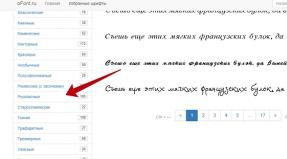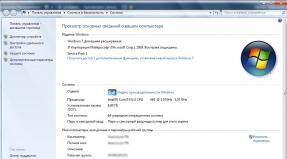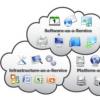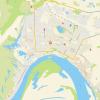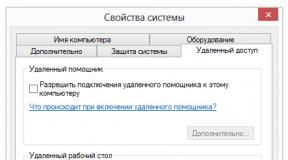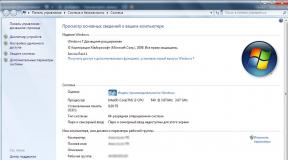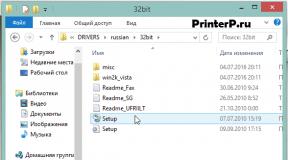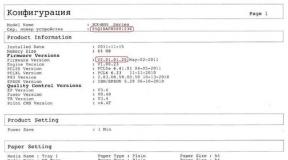Remote computer administration. How to connect remote access to a computer via the Internet: Guide
Free solutions
Remote control involves connecting to another computer to gain access and manage resources. Thanks to this feature, the user can solve many additional tasks remotely: conduct consultations, diagnostics, and computer monitoring. Thus, tasks are simplified that are often impossible or irrational to perform at a distance.
As part of the review, 10 solutions (6 free and 4 paid) for remote management will be considered. The main attention will be paid to the following features of the software of the selected category:
- Contents: what components are included in the distribution, types of installation on the host and client computer
- Connection modes: supported protocols, working with RDP (see below)
- Presentation functions: this means the possibility of audio and video accompaniment, screen capture, the presence of additional tools (“pointer”, “drawing board”, etc.)
- Security: supported encryption technologies, storage of confidential data, types of authorization on local and remote computers, availability of necessary settings
- Platform support: mobile platforms and OS, online version available.
Standard Windows capabilities will not be left unattended, namely the Remote Desktop Protocol (RDP), which will be considered first. At the end of the review there is a comparison table with detailed information about the presence of the necessary functions in the mentioned applications.
RDP - Windows Remote Desktop Protocol
Starting with Windows NT, support for the Remote Desktop Protocol (RDP) is provided. Accordingly, Windows 7 offers the user RDP 7 (an update is also available for Windows XP), Windows 8 - RDP 8 (also available for Windows 7 SP1). The capabilities of the current version, RDP 8, will be reviewed.
Connecting to a remote worker is carried out using the mstsc.exe application, after entering the name of the remote computer. Connection parameters are also available in this dialog.
The “Screen” tab specifies the resolution of the remote desktop (with the ability to enable full-screen mode), color depth (up to 32 bits).
In the “Local Resources” section, you can select the audio playback mode (on the remote or current computer), enable audio recording from the remote desktop. This section also configures access to the printer, local disk, drive, PnP devices, and ports.
The quality of data transmission is regulated in the “Interaction” tab. You can not only select a connection profile, but also independently determine the display parameters: desktop background, anti-aliasing, visual effects, image caching. All these options affect the speed of data transfer during remote access and can significantly optimize network traffic.
Security settings are available through the System component (System Properties in Control Panel). In the “Remote Access” tab, you can allow Remote Assistance connections, as well as remote connections to your computer. Authentication is performed at the network level. You can also limit access by specifying a list of allowed remote desktop users yourself.

Thus, Windows provides basic tools for working with the RDP protocol. But, as expected, advanced security settings, support for mobile platforms, and presentation functions are not offered to the user.
Teamviewer
TeamViewer is perhaps the most famous free remote control program. The toolkit allows you to establish remote access to your home computer, manage your desktop from various platforms and devices, and administer Windows servers. In addition, the developers highlight the corporate capabilities of TeamViewer: the program can be used to organize conferences, consultations and help colleagues at work.
TeamViewer is available for Windows, Linux, Mac platforms (with restrictions), remote access from OS-based devices is possible. TeamViewer client in the full version of the distribution kit (“All in one”), as a system service (TeamViewer Host), in a portable format, on a terminal server and other options. It is worth highlighting the TeamViewer QuickSupport module, which does not require installation and is optimal for performing urgent tasks.
The full version of the program has client and operator parts available. The TeamViewer interface is represented by a main window with two tabs - “Remote control” and “Conference”.

Remote control
The user receives a unique ID to identify the computer on the network and a temporary password. Also, using the partner's ID (optional IP address) and knowing his password, you can establish a connection to a remote device.
Three connection modes are available:
- Remote control: remote control of a device or collaboration on the same computer
All actions are performed on another computer through the remote control window. At the same time, it is possible to change the resolution and scaling, switch between active monitors and other options. - File Transfer: Share files during a session
To exchange data in TeamViewer, a two-panel file manager is used, in which host and client resources and basic file operations for working with them are available, such as creating folders, deleting, copying, etc. - VPN: virtual network mode
You can set up a virtual private network between computers to provide shared access to devices (printers, removable media, etc.).
Conferences
In this TeamViewer tab you can create a blitz conference or connect to an existing one. Among the available tools are voice and video communication, screen sharing, and session recording with the ability to convert to AVI. Whiteboard is used as a canvas for drawing, sketching, and commenting.

One of the undeniable conveniences of TeamViewer is the “Computers and Contacts” list, which provides quick access to devices. In addition, here you can monitor the network status of computers and exchange messages (group chat options are available). Looking ahead, it should be noted that not every review participant offers an address book for quickly connecting to other devices.
For security purposes, the program uses encryption of sessions (AES 256 bit) and traffic (RSA key exchange). Files transferred during the session are signed by VeriSign and the end user must consent to receipt. Through the TeamViewer settings, it is possible to restrict access: setting access to all operations only after confirmation or prohibiting outgoing sessions.
Summary
TeamViewer is a universal solution with the ability to choose a remote control method. Thanks to its wide range of multimedia functions and convenient organization of contacts, the program is optimal for holding conferences.
[+] Wide functionality of the free version
[+] Conference tools
[+] Security
[+] Presentation capabilities
[−] Remote session limit (5 minutes in free version)
Ammyy Admin
Ammyy Admin does not require installation and combines a simple interface and flexible functionality. The program is free and has no restrictions for home use. Distributed for Windows, Linux/FreeBSD platforms, mobile devices are not supported.

Client and operator modules are available in the main window. The user receives an ID that is generated in connection with the equipment. Optionally, you can use IP when connecting.
The client part can be activated or stopped, thereby prohibiting connections; By default, Ammyy Admin works in standby mode. You can track the connection status using indicators, the explanation of which is in.
There is an address book, contacts can be combined into groups, the order of contacts can be changed, and new addresses can be manually added. The network status of computers, however, cannot be monitored.
The main connection modes include Desktop (remote desktop), File manager and Microsoft RDP. RDP allows you to connect to a remote desktop; standard Windows functions are provided.
Other modes include Voice Chat and Speed Test. Obviously, the multimedia capabilities here are not as fully presented as in TeamViewer: Ammyy Admin is not positioned as a kind of corporate solution. You can note the screen sharing function, which in combination with voice chat makes Ammyy Admin a program suitable for remote assistance.
By going to “Ammyy → Settings → Operator”, you can specify RDP parameters, select the encryption type and codec profiles, thereby reducing the load on the network. More importantly, the “Network” tab allows you to configure the Ammyy Admin connection, manually specify routers, enable or disable data transfer over the Ammyy Worldwide Network.

The file manager is a two-panel one, through which standard file operations between the client and the operator are available.
In the access rights settings (“Client → Access rights”), you can set separate parameters for each ID. The authentication mode (connection to a PC) is available to choose from: by Hardware ID, password or user permission. Thus, you can minimally protect your computer from unauthorized remote connections.
Summary
The main advantages of Ammyy Admin are its speed, simple and fast interface, relative independence from Ammyy servers and free of charge. This is probably not the most optimal solution for working in a team, but for individual use, with several computers at your disposal, it is quite possible.
[+] Speed
[+] Easy to set up
[+] RDP support
[−] No support for mobile devices
Supremo Remote Desktop
Supremo Remote Desktop is a convenient portable tool for remote control and remote assistance to other users. Runs Windows XP and higher, mobile devices are not supported.
The program starts without installation; to start working, the host and client must download Supremo Remote Desktop from the developer’s website. Traditionally, two operating modes are supported: using a computer as an access point and connecting to a remote device. In the first case, access is opened by pressing the Start button. In the Your credentials section, the data required for connection is available: ID and password generated at the beginning of the session. The client requests authorization when logging in (Ask authorization option), thereby preventing unauthorized access attempts to the computer.

To connect to the host, use the Your partner field; you can also select an address from the Address Book. The list of active connections is displayed in the Connections section of the main program window.
During transmission, the HTTPS (SSL) protocol is used, the data is encrypted. The security settings are poorly disclosed: you can set a password to launch the program and specify the IDs allowed for the connection.
Other tools available in Supremo Remote Desktop include multiple connections of users to one machine. To transfer files, a manager is used that is similar to the classic two-panel one; uploading and downloading files is available. There are no presentation or multimedia functions provided. This certainly limits the use of Supremo as a remote assistant.
Summary
Supremo Remote Desktop is an easy-to-use program that has a standard set of tools for remote control. Users who do not need multimedia functions may pay attention to it.
[+] No router setup required
[+] Simple interface
[−] Few settings
[−] Slow screen rendering
mRemoteNG
Speaking about universal tools that allow you to work with several protocols simultaneously, it is worth mentioning mRemoteNG. The program provides access to VNC, ICA, SSH, Telnet, RAW, Rlogin and HTTP/S, and also has RDP support. Distributed in a portable and standard version of the installer for the Windows platform.

The mRemoteNG interface is presented in several sections, with panels and tabs - as a result, the user can easily customize the appearance of the program in his own way. Basic options are available in the “Configuration” section. Here you can specify the protocol required for connection and related parameters: connection settings, protocol, gateway, appearance, resources and others. “Configuration” displays the host connection status.
Connection to devices is carried out through the quick connection panel - here it is easy to create several configurations, which, in the case of multiple protocols, is very convenient. Connections can be grouped and configurations can be easily imported/exported.
File transfer is carried out via the SSH protocol - which is not very familiar to the average user and at the same time, more reliable in terms of security. Additional features include a port scanner, and you can add external tools to the list.
The vagueness of mRemoteNG is striking. This is manifested in an unusual interface: it is not so convenient to work and configure with each specific protocol. In the connection configuration, many parameters are reduced beyond recognition - this can be attributed to the quality of localization. When trying to find a description of the functions, the documentation is silent, its sections are empty.
Summary
A notable feature of mRemoteNG is the combination of popular protocols into a single graphical shell. By setting up multiple connections, there is no need to use multiple specialized solutions. This plus to some extent compensates for the unintuitiveness of the program and the lack of documentation.
[−] Unintuitiveness
[+] Support for multiple protocols
[+] Transfer files via SSH
[−] Lack of documentation
TightVNC
Homepage: http://www.tightvnc.com/
TightVNC Software develops several products: TightProjector, RFB Player, VNC Reflector and TightVNC. TightVNC is a program for remote control; it can be used to solve computer problems, educational purposes, and administration.
TightVNC is a cross-platform solution. For Linux, however, at the time of writing this review, only the old version of the program is available; Mac OS is not supported. However, there is a version of TightVNC available on the Java platform, which allows for remote control via a web server. On the Windows platform, TightVNC is installed as a regular application or as a system service. “Silent” mode is supported, it is quite easy to transfer the configuration to other computers or update servers remotely.
The TightVNC toolkit is divided into two modules: WinVNC - the server part, installed on the remote machine, and the Viewer application, designed to view the contents of the remote server's screen. In the Viewer connection settings, the VNS server address and transmission speed are set.

It should be noted that TightVNC does not generate an access password; you need to define it yourself in the settings. The connection status can be recognized by the icon displayed in the notification area: if at least one user is connected to the computer, the colors of the icon change.
The developers hint that data transfer via VNC, despite the initial DES password protection, is imperfect. For security reasons, it is recommended to use SSH tunneling. At the same time, TightVNC settings reduce the likelihood of unauthorized access to zero. In future versions of the program it is also planned to introduce more reliable protection methods.
Summary
TightVNC surprises with a large number of settings regarding connection and security. This is a good choice for an administrator, but in terms of transfer to a server and further maintenance, it is not the best option for an inexperienced user.
[+] Flexible setup
[+] Java version
[−] Non-operative setting
[−] Unintuitive interface
Remote Utilities
Remote Utilities is a solution, according to the developer, intended for small and medium-sized businesses. Remote control is possible directly, via a local network or the Internet. When working with a set of utilities, no firewall adjustments or preliminary configuration are required.

The complex works only under Windows; for Linux it is suggested to install the Wine emulator - but only for working with RUT-Viewer. There is no mobile version.
Remote Utilities consists of three modules: viewer - installed on the local computer, host - on the remote computer, agent - a module for supporting users. The agent, it should be noted, is optimal for quickly establishing communication between the client and the host. Remote installation, as well as updating, is easy thanks to the Remote installation tool.
A connection in one of the above modes is made using the New connection dialog (Connection → Add Computer), you can specify an IP address, Internet ID or DNS as an access point. The connected computer is added to the list of the address book, from which the necessary devices are subsequently selected.
Standard tools for remote control are provided, such as a remote device manager, registry viewer, terminal and file manager. The manager is two-panel, with the ability to copy and move data, launch and open applications and documents on a remote host. Also available are terminal support and power control.
Text chat is quite simple, but be aware that Remote Utilities also offers audio/video chat for users. Here it is worth mentioning the ability to capture video and adjust the transmission quality - from 24-bit color transmission to an optimized “picture” for a network with limited transmission (in addition, there is a Network usage mode parameter in the Properties settings of the remote computer). In a word, there are those features that have been repeatedly listed in similar programs with RDP support.
Remote Utilities provides 3 types of authorization, AES encryption with a 256-bit key, and a 2048-bit public key. Incoming connections are filtered by IP, and you can also create a list of trusted users with different access rights. The security subsystem is optional: you can choose RUT or WinNT. Both modes allow you to flexibly configure access to certain functions for each user; there are no significant differences between them.
Summary
A simple set of utilities for remote connection, without selecting a connection protocol, but extremely easy to install and configure. Essentially, it lacks cross-platform functionality and a user-friendly interface for working with multiple devices simultaneously.
[+] Remote installation and update in remote mode
[+] Availability of basic settings for RDP
[+] Work via local and Internet
[+] Free (for non-commercial use)
Today we will look at programs for remote computer access that are relevant to system administrators, as well as users, for solving technical problems, using resources, or transferring files between your PC and a remote PC.

A remote access program will help you monitor and manage the desktop of a third-party machine, settings and functions, exchange material, chat, launch installed software and much more.
Programs |
Russian language |
License |
Rating |
File access
|
Phone control
|
| Yes | Free | 10 | Yes | Yes | |
| Yes | Free | 10 | Yes | No | |
| Yes | Free | 9 | Yes | No | |
| Yes | Free | 9 | Yes | Yes | |
| No | Free | 8 | Yes | Yes | |
| Yes | Free | 8 | Yes | No | |
| Yes | Free | 7 | Yes | No | |
| Yes | Free | 8 | No | Yes | |
| Yes | Free | 10 | Yes | Yes | |
| No | Trial | 6 | Yes | Yes | |
| Yes | Free | 7 | Yes | No |

Let's start our review with a popular assistant for accessing control of third-party PCs, which has useful options and high quality work. TeamViewer has a fairly simple operating algorithm, creates interactive conferences for up to 25 people, records videos and screenshots of current actions, allows you to exchange files, share the screen, chat and send voice messages. The program supports modern operating systems and bypasses various protections such as firewalls, proxies, etc. To work in the program, you need to install the product on both computers and enter the access code. Functioning in the utility requires an Internet connection.

The utility makes a remote connection to another PC, providing access to the software, functionality and desktop of a third-party device. AeroAdmin provides the connected user with access rights, has different connection modes, opens multi-sessions, selects the picture quality for the channel and encrypts the connection. Clipboard synchronization, file transfer and resuming if the connection is lost are also available. The program is distributed in four versions, the free version is just suitable for home use.

Professional software with extensive functionality and a high-quality interface for connecting and controlling a remote computer. In its work it uses the secure protocols SSH, Telnet, Rlogin, SCP, SFTP and Raw; the connection itself is made through the Network, confirmed with a password and protected from interception. In the settings you can switch between options, select remote connection parameters, port forwarding, and use hot keys. The client has a file manager, connects to a Unix system, generates an RSA cipher algorithm and protects copied files from theft.

This client will help you gain access via the Internet to remote control of another computer and conduct high-speed data exchange between devices. AnyDesk guarantees high quality of the broadcast image, has settings for audio broadcast, settings for blocking the mouse and keyboard of the client machine, as well as passwords for auto-connection without prompting. The functioning of the software consists of establishing a connection between two PCs by assigning email addresses.

An excellent application optimized for different versions of Windows for controlling a remote PC and broadcasting images. The utility allows you to easily connect to your local machine, configure access to it, and synchronize with mobile devices. RemotePC has built-in options for administration, extensive options for remote control, Remote Mouse and Remote Access add-ons. Support for proxy servers is available, hiding user IP addresses, convenient identification with a password and login, and a single point for changing parameters. The program is convenient and easy to use, despite the English-language menu.

Radmin controls the remote computer from the user's computer, providing fast and high-quality work without freezes and problems. It is considered one of the best in its category and justifies this title with its capabilities and performance. Working in the software involves setting up remote access, transferring the necessary material and applying the functionality simultaneously on both PCs. The user can use text and voice chats, exchange files and open access to the desktop. The only downside is that there is only a month of free use.

A high-quality program that remotely controls other PCs using LAN and INTERNET computer networks. Helps you configure the control panel on a connected computer, authorize Microsoft, or transfer files. The remote device is controlled using your mouse and keyboard, supports multiple monitors, viewing the screen of another PC through a browser using a Java viewer and working through a proxy server.

A simple service for gaining access and control of a remote computer, managing the desktop and various device functions. Having received remote control of your computer, you can exchange information and files over a local network, open streaming media content, synchronize with Android devices, edit office files, and more. In the Splashtop settings you can adjust the screen resolution, response parameters and stream pictures. You need to start working in the software by creating an account or authorizing with a Google account.

The work of the program is to form a client-server chain that organizes the management of a third-party desktop. When connecting remotely to the system of another PC, a high degree of encryption of the transferred material is formed, thanks to which users can exchange files, conduct seminars, online presentations, and more. Supremo Remote Desktop has a file manager, supports a proxy server and allows you to make a huge number of connections, using a separate password for each. The downside is the 21-day trial period and the lack of a “conference” option.
Simultaneous work on several computers, of which only one is in front of you, and the rest are even on the other side of the Earth, is not fantastic. To have this wonderful opportunity, all you need is Internet access and a remote control program on each machine.
Remote control programs are bridges that connect the PC or mobile gadget in front of you with various computer devices around the world. Of course, if you have a key, that is, a password that allows remote connection with them.
The possibilities of programs of this kind are very wide. This includes accessing the contents of disks, launching installed applications, changing system settings, and viewing user actions... In short, they allow you to do almost everything on a remote PC that you can do on a local one. Today's article is an overview of six free programs for remote control of a Windows-based computer (and not only), one of which is included with the operating system itself.
If you need to establish a connection between two computers or a PC and a mobile device, one of which (remote) is running Windows, and the second is running Windows, iOS, Android or Mac OS X, sometimes you can do without third-party programs (if the connection involves Windows computers only). The Remote Desktop system application is present in all editions of Windows, starting with XP. It is not necessary that both machines have the same version of the OS; you can easily establish a connection, for example, between Windows 10 and Windows 7.
The Microsoft Remote Desktop app for Android and Apple is available for free download on Google Play and the App Store.
What else is needed to create a connection:
- Remote access permission - configured on the computer that you are going to manage externally.
- An account with a password on the remote computer. To solve administrative tasks (installing and uninstalling programs, changing system settings, etc.) you need an account with administrator rights.
- Connecting both machines to the Internet or being on the same local network.
- On the receiving side, TCP port 3389 is open (used by Remote Desktop by default).
How to enable permission
This and further instructions are shown using Windows 10 as an example.
- Right-click on the “This PC” icon on the desktop. Let's open "Properties".

- While in the “System” window, click “Remote access settings” in the transition panel. In the “Remote Desktop” section of the window, check the “Allow...” checkbox (it’s better to leave the “Allow authenticated connections only” checkbox). Next, click “Select Users”.

- To add a user who will be allowed to connect to you remotely, click “Add”. In the “Enter names” field, enter the name of his account on this computer (don’t forget, it must have a password!), click “Check names” and OK.

This completes the setup.
How to configure connection settings
We perform the following steps on the computer from which we will make the remote connection.
- Click on the search icon in the taskbar and start typing the word “remote”. Select from the found “Remote Desktop Connection”.

- By default, the application window opens minimized, with only fields for entering the computer name and user data. To access all settings, click the “Show options” arrow. At the bottom of the first tab - “General”, there is a button for saving connection settings to a file. This is useful when you use different settings to connect to different machines.

- The next tab, “Screen,” allows you to change the image properties of the remote computer’s screen on your monitor. In particular, increase and decrease the resolution, use multiple monitors, change the color depth.

- Next, we will configure “Local Resources” - sound from the remote computer, conditions for using keyboard shortcuts, access to the remote printer and clipboard.

- The parameters of the “Interaction” tab affect the connection speed and the quality of displaying the image from the remote machine on your monitor.

- The "Advanced" tab allows you to define actions if authentication of a remote PC fails, as well as set connection parameters when connecting through a gateway.

- To start a remote access session, click “Connect.” In the next window, enter the password.

Once the connection is established, the current user's computer session will be terminated and control will pass to you. The user of the remote PC will not be able to see his desktop, since a screensaver will appear on the screen instead.
By following these instructions, you will easily connect to a computer that is on the same network as yours. If the devices are connected to different networks, you will have to make several additional settings.
How to connect to a remote computer via the Internet
There are 2 ways to set up a Windows Remote Desktop connection over the Internet - by creating a VPN channel so that the devices see each other as if they were on the same local network, and by forwarding port 3389 to the local network and changing the dynamic (variable) IP addresses of the remote machine to permanent (static).
There are plenty of ways to create VPN channels, but describing them all will take quite a lot of space (besides, a lot of information about this can easily be found on the Internet). Therefore, let’s look at one of the simplest ones as an example – using Windows’ own tools.
How to create a VPN channel in Windows
On the remote machine that will be the server:

After this, the “Incoming Connections” component will appear in the network connections folder, which will be the VPN server. To ensure that the connection is not blocked by the firewall, do not forget to open TCP port 1723 on the device. And if the server is assigned a local IP address (starting with 10, 172.16 or 192.168), the port will have to be redirected to the external network. How to do this, read below.
On the client computer (Windows 10), setting up the connection is even easier. Launch the “Settings” utility, go to the “Networks and Internet” -> “VPN” section. Click "Add VPN connection". 
In the options window, specify:
- Service provider - Windows.
- Connection name – any.
- Server name or address – IP or domain name of the server that you created before.
- VPN type – detect automatically or PPTP.
- Login data type – login and password (one of the accounts to which you have given access permission). To avoid entering this data every time you connect, enter it in the appropriate fields below and check the “Remember” checkbox.
 Port forwarding on the router and obtaining a static IP
Port forwarding on the router and obtaining a static IP
Port redirection (forwarding) is performed differently on different devices (routers), but the general principle is the same everywhere. Let's look at how this is done using the example of a typical TP-Link home router.
Let’s open the “Forwarding” and “Virtual Servers” sections in the router’s admin panel. In the right half of the window, click the “Add” button. 
In the “Add or edit entry” window, enter the following settings:
- Service port: 3389 (or 1723 if you are setting up a VPN).
- The internal port is the same.
- IP address: computer address (look in the connection properties) or domain name.
- Protocol: TCP or all.
- Standard service port: you can not specify it or select it from the PDP list, and for VPN – PPTP.
How to make a changeable IP address permanent
The standard package of Internet service providers for home subscribers, as a rule, only includes a dynamic IP address, which is constantly changing. And assigning a permanent IP to a user usually costs him a lot of money. So that you do not have to incur extra costs, there are DDNS (dynamic DNS) services, the task of which is to assign a permanent domain name to a device (computer) with a changing network address.
Many DDNS services provide their services for free, but there are also those who charge a small subscription fee for this.
Below is a short list of free DDNS, whose capabilities are more than enough for our task.
The rules for using these services, if they differ, are insignificant: first we register an account, then we confirm the email address, and finally we register the domain name of your device and activate it. After this, your home computer will have its own name on the Internet, for example, 111pc.ddns.net. This name should be specified in the connection settings instead of the IP or local network name. 
By the way, some routers only support a small group of DDNS providers, for example, only the oldest and most famous DynDNS (now paid) and No IP. And others, such as Asus, have their own DDNS service. Installing alternative firmware DD-WRT on the router helps remove restrictions.
Pros and cons of using Windows Remote Desktop
The main advantage of the proprietary Windows tool over third-party developments is the absence of intermediary servers during the connection, which means a reduced risk of data leakage. In addition, this tool has a lot of flexible settings and, with a skillful approach, can become an “impregnable fortress” and a “space rocket.”
Other advantages of the Windows desktop are that there is no need to download anything, there are no restrictions on session duration, the number of connections, and it is free.
Disadvantages: difficulty in setting up for access via the Internet, vulnerability to Pass the Hash attacks.
TeamViewer
Before you start using the service, you will have to register a Google account (Android device users already have one) or log in using it in the Google Chrome browser.
The main window of the Chrome Desktop includes 2 sections:
- Remote support. This contains options for managing a one-time connection to another PC and providing access to yours.
- My computers. This section contains machines with which you have previously established a connection and you can quickly connect to them using a given PIN code.

During the first communication session using the Chrome Desktop, an additional component (host) will be installed on the remote computer, which will take 2-3 minutes. When everything is ready, a secret code will appear on the screen. After entering it in the appropriate field, click “Connection”.
As with TeamViewer, the user of the remote machine will be able to see all your actions on the screen. So for covert surveillance, for example, of a child, these programs are not suitable.

is a very simple and equally reliable utility designed for remote control of computers running Windows and Linux. Its main advantages are ease of use, reliability, high connection speed and the fact that it does not require installation. The disadvantages are the lack of mobile versions (it will not be possible to establish a connection via Android and iOS using this program) and the fact that many antiviruses consider it malicious and try to remove it. Fortunately, the latter is easy to prevent by adding the utility to the exceptions.
Ammyy Admin supports 2 methods of establishing communication - by ID number and by IP address. The second one works only over the local network.

The utility window is divided into 2 halves - “Client”, where the computer identification data and password are located, and “Operator” - with fields for entering this data. The connection button is also located here.
The contact book and program settings, which are quite simple, are hidden in the “Ammyy” menu.
- another compact portable Windows program, externally similar to the previous one, but with a more interesting set of functions. Supports 2 connection methods - by ID and IP, and 3 modes - full control, file manager (file transfer) and only viewing the screen of a remote PC.
It also allows you to define several levels of access rights:
- Remote operator use of keyboard and mouse.
- Clipboard synchronization.
- Changing access rights by an administrator, etc.
The “View Only” mode can be used to covertly monitor the actions of users of remote machines (children, workers), which is not available in similar products.

In the main AeroAdmin window there is a button to open an email chat (located next to the “Stop” button). Chat is designed to quickly send an email to the operator, for example, asking for help. This function is unique, since analogue programs only have a regular chat for text messaging. And it starts working only after the connection is established.
Unfortunately, the AeroAdmin contact book does not become available immediately. It requires separate activation - via Facebook. And only members of this social network can use it, since in order to receive an activation code, developers request a link to their personal page. It turns out that those who liked the program cannot do without registering on Facebook.
Another feature of AeroAdmin is that it can be used for free even for commercial purposes, if you do not need additional features (continuous connection, multiple parallel sessions, etc.), available only in paid versions.
is the last utility in today’s review for remotely connecting to a Windows PC from another computer or mobile device. Can be used without installation or with it. 
Like its predecessors, it has a number of unique functions:
- The highest speed of image transfer from a remote machine.
- The fastest file sharing, even with low Internet speeds.
- Supports simultaneous connection of multiple remote users. The ability to collaborate on one project (each user has their own cursor).
Plus, like other programs in this class, AnyDesk provides the operator with full access to the functions of the remote machine, connects very simply (using ID and password) and reliably protects the transmitted data.
Ever since my work as a laboratory assistant in an information center, I have understood one important truth: “the less you work, the better you work.” Any human activity can be improved and even the most hated work can be made enjoyable. Imagine for a moment that you have one computer lab at your disposal. Its maintenance takes relatively little time. All problems that arise can be resolved on the spot simply by going to the appropriate computer.
But one fine day, the staff of equipment increases sharply from the usual fifteen PCs in your classroom to hundreds of computers scattered across several buildings. And now every new owner of a miracle box under his desk calls with the question “how to align a table in Excel?” After talking with such an individual for a couple of minutes and realizing that you need to help, you trudge up the stairs to the poor fellow’s office. Most likely, at first there will be not only a sign on the monitor screen that has moved down, but also a kilo of gingerbread cookies with an invigorating mug of tea. But soon even gingerbread will not be able to sweeten the constant running around, and the calls will cause an involuntary sigh. In such a situation, there are only two ways out. Find someone who will run for you or come up with a way to combat the blatant computer illiteracy of your employees while remaining within the walls of your office.
Download Radmin Server and Viewer
Remote Administrator is one of the programs for remote PC administration. Such software works on the client-server technology that is already familiar to us. The product is made in Russia and is distributed free of charge. That is, we have the opportunity to download a full-fledged version without limited functionality, which will work for 30 days. Then you should purchase it. You can also use torrents. In their open spaces you will definitely come across a repack from Alker; it works as stably as the licensed version. I’ll probably use the official trial version for this material.
Step 1. First, go to the website and click the big green button “Download 30-day trial version.”

Step 2. Then on the page that opens, click “Download Server+Viewer” in one archive.

Step 3. After the download is complete, we will unpack the installation files from the archive into a separate folder for convenience.

Installing and configuring Radmin Server
First, let's deal with the server part of the program. It is its installation on client PCs that allows us to manage them remotely.
Step 1. On the computer that we are going to manage, run the file rserv35ru.msi and in the first installation window click “Next”.

Step 2. We carefully read the license agreement, accept it and click “Next”.

Step 3. And finally the treasured “Install” button. Click on it and wait for the installation process to complete. During this process, the screen may blink periodically. Don't be alarmed, this is normal, drivers for video capture are just being installed.

Step 4. After the installation is complete, we will not uncheck the “Configure user access rights” checkbox. Click “Finish” and go directly to setting up the program.

Step 5. In the new window, select “Launch mode” and set the value to “Automatic”. This is necessary so that the program starts itself when the operating system is turned on.

Step 6 Then go to “Settings” and in the first tab “General Settings” we do not change anything. We just remember the port that is set by default by the program. We'll need it soon.

Step 7 In the “Miscellaneous” tab, check the “Load Mirror Driver at startup” checkbox. This is necessary so that the screen of the remote computer does not blink every time we connect and the user does not know about our presence. A very useful function for those who like to observe employees and do not want unnecessary suspicion on their part.

Step 8 We're done with the settings. Now let's move on to changing access rights. To do this, click “Access Rights” in the main menu and repeat the command in the window that opens.

Step 9 Until users are created, you cannot connect to this computer. In order to create users, click “Add” and enter the name under which we will log into the computer. As an example, I will create a user "admin".

Step 10 Now we need to give our user certain rights. And since this is an admin, we will give him full access to the remote computer. Click “OK” in this and the next window.

Step 11 If you purchased the program from the developers or downloaded it from a torrent, then it will have another interesting feature. Namely, the “Advanced” button, which allows you to configure hiding the tray icon. When there is no tray icon, the user may not even know that this product is installed on the computer.

Step 12 This was the last step in setting up Radmin Server. Now we will restart the computer for our settings to take effect. After the reboot, go to “START-Control Panel-Network and Sharing Center-Change adapter settings” and right-click on the adapter with which the network connection is made. In the drop-down list, click on the “Status” item.

Step 13 In the next window, click “Information” and look at the IP address of the computer. It will be useful for us to log into this PC using Radmin. But only if this IP is permanently assigned to this computer, otherwise it is better to look at the DNS name.

Step 14 To view the computer name, go to “Start” and right-click on the “Computer” shortcut. In the window that opens, in the “Full name” line we see the name of our PC.

Great. Let's once again recall the information that we will soon need:
- Port for connecting to a remote computer: 4899
- Computer IP address: 192.168.0.51
- DNS computer name: win7
All of your data, except the port, will be different from mine. We have finished manipulating the remote machine. Let's start setting up the client part of the program (Radmin Viewer).
If Radmin Server must be installed on remote computers to which you are going to connect, then Radmin Viewer, on the contrary, is installed on your computer. It allows you to connect to all computers on your network on which the program server module is installed and configured. Let's not waste time. Let's start the installation.
class="eliadunit">
Step 1. On the administrator’s computer from which connections will be made, run the rview35ru.msi file and click “Next” in the first installation window.

Step 2. We accept the license agreement and click “Next”. In the next window, select “install the application for all users of this computer.”

Step 3. Click “Install” and wait for the installation of Radmin Viewer to complete.

Step 4. Fine. Now we need to make sure that our computer is on the same subnet as the remote PC. To do this, go to the already familiar path “START-Control Panel-Network and Sharing Center-Change adapter settings” and right-click on the adapter. In the drop-down list, click on “Status-Information” and look at the IP. The third digit between our computer and the remote computer must match; this is the subnet number. If everything is correct, then we move on.

Connection in “Management” mode
In this mode, all your mouse and keyboard manipulations are transferred to the remote computer. You get the opportunity to remotely control your desktop as if it were right in front of you.
Step 1. Go to “Start” and launch “Radmin Viewer 3”. In the main program window, click “Connection-Connect with...”.

Step 2. In the “IP address or DNS name” line, enter the IP address of the remote computer (in my case 192.168.0.51) and click “OK” and try to connect to the computer in the “Management” mode.

Step 3. In the window that appears, enter the username and password (those set on the remote station). And holding our breath, click on “OK”.

Step 4. The next moment we gain access to the desktop of the remote computer. We can perform any actions on it using the mouse and keyboard.

Connection in "View" mode
In this mode, you can observe all user actions, but do not interfere with the work process. Personally, I often use this mode. He has proven himself excellent in the educational process. When students work on their computers, they often have various questions. In order not to run to each of them, I simply open five Radmin windows on the laptop at the same time and, moving between them, give advice on completing the task.
Step 1. In the main window of the program, click on the already favorite “Connection-Connect with...” tab.

Step 2. Enter your usual username and password combination.

Step 3. And we see the screen of the remote computer. But we remember that this mode allows us only to look, but not to touch.

Connection in “File Transfer” mode
This mode is convenient because by connecting to a remote computer you have the opportunity to download any file from it or transfer your own. In this case, the user will not even feel any manipulation on your part. Another interesting feature is that files can be downloaded from any folders, not just from public ones. After all, we get access to all PC drives (except network drives, unfortunately).

Creating an Address Book
The Radmin address book allows us to save the computers to which we connect in a convenient format. Connections can be distributed into convenient folders based on the structural divisions of the organization. We will not dwell on the address book in more detail. Let me just say that after you have created all the necessary connections and distributed them in the folder tree (on the left in the main Radmin Viewer window). We need to export our settings to a separate file, which we can open on any computer with Radmin Viewer.
Step 1. Click “Service-Export Address Book...”.

Step 2.Set the file name and select its location.

Step 3. We transfer the file to a USB flash drive and launch Radmin Viewer on another computer. Open “Service-Import Address Book...”.
Step 4. We select the address book and after a second we see that all our previously created computers have loaded. By the way, one more trick, if you click on the icon of the same name “Scanning servers in the current folder” (or the F5 hotkey), then on those PCs that are currently turned on, a check mark will appear indicating that the connection is ready.

A spoon of tar
Of the shortcomings noticed during the operation of this product, only three main ones can be identified. Although they are rather not shortcomings, but rather wishes to the developers to improve the program:
- When connected, the Aero style is reset to classic, which immediately tells an experienced user that someone is watching him (this can be solved by forcing the use of the classic Windows theme);
- There is no way to block the keyboard and mouse on a remote computer (and sometimes you really want to catch a student or employee doing something curious);
- Unfortunately, the program is only available for Windows.

Let's summarize. Radmin is great for remotely managing computers. The program is successfully used both to help employees and to modernize the educational process. It is also very convenient to administer the server. After all, if a remote access program is installed on the server, then there is no need for a standard monitor. Within the framework of this article, it was originally planned to talk about how to configure Radmin to connect over the Internet. Namely, do this by forwarding ports on the router. But then it was decided to make a separate material on this topic. So wait, friends.
For those who are interested in improving their professional qualifications, I recommend taking a free online test on the developers’ website. This will allow you to receive a certificate as a specialist in working with the Radmin software product, which can be printed and hung in a beautiful frame above your desk.
Denis Kurets was with you and the release of the information technology blog. Subscribe to updates. Write your comments and wishes. And may your path of knowledge be fast and successful!
class="eliadunit">Hello, friends. Today we will get acquainted with a unique program that every user should have. TeamViewer— program for remote computer control. What do you need it for? Let's think...
So, you have the Internet and a computer, is it logical? If there are practically no problems with the first (it either exists or it doesn’t), then with the second something always happens.
Either the antivirus does not want to update, then An interesting program is not installed or the game. Or maybe the program was installed, but you couldn’t figure it out on your own.
It also often happens that The computer started to slow down, throws out all sorts of windows about the shortage...
He will irritate and enrage you (poor mouse - she usually suffers first).
So what should you do if you are a professional in your field, but somehow things haven’t worked out for you with computers, you don’t have time to delve into it, or you have another excuse?
It’s all very simple - remember how in stagnant times every resident of the Soviet Union had a friend who could get hold of some kind of shortage?
So today, nothing has changed, only instead of “getting it”, everyone should have a friend who understands computers.
Read also on the website:
And they are there - your children, grandchildren, work colleagues, acquaintances of acquaintances, friends... another thing is, how will they help you if they do not live with you, on the other side of the city, or generally not in your city, country?
Elementary. They will just sit at home, in front of their monitor, but at your computer, and they will fix and debug everything for you in 5 minutes.
Don't be surprised - this can be done very easily. The 21st century is upon us. You install TeamViewer, it generates your username (ID) and password, send them via ICQ, Skype, in an email or dictate on your mobile phone, in extreme cases, to your personal “hacker” and he, no matter what hole in the world he is in, comes to your computer and fixes everything.
All you have to do is drink tea with sweets and watch the assistant’s actions on your monitor.
TeamViewer creates a virtual, secure tunnel between computers on the Internet and allows you not only to tinker with other people’s computers remotely (with the consent of the owner), but also to transfer any data (files, movies, photos, programs...) bypassing any firewalls and other barriers.
You will also be able to monitor the actions of other users on your computer during your absence, from your workplace, for example.
Remember what we did CCTV system and spied on children smoking? So now you can change the angle and look not at them from the webcam, but at the monitor - through their eyes.
Just be careful - the program supports video and audio communication in addition to video, there is a chance of making your children stutterers if you want to scold them without warning.
“Where did you go, dear!?”
And vice versa, if you understand computers, then you are probably constantly asked for help. So TeamViewer is the best tool for providing this assistance.
They came in, they did it, they left - quickly, sternly and without the quiz “what is this, what is it for and why?” Do you understand me.
Convinced you of the usefulness of this program for remote access to a computer? Then go ahead - install it and learn how to use it. It will only take you a few minutes.


Learn more about portable programs












This point depends on the degree of trust in the assistant.


I have not installed it, but it is quite possible that you will want to use this feature.








Don’t be too clever and write down the result of your mental efforts on a piece of paper - otherwise you will forget, as everyone always forgets. Remember the easiest way to come up with a strong password? English keyboard layout and type looking at Russian button symbols. Everything ingenious is simple.


The right is also yours. But by creating an account, you won’t have to worry about passwords and logins every time. The principle is the same as in ICQ - it’s online, which means you can connect from a list of computers. It is very convenient for helping parents - there is no need to torment them with “difficult” body movements every time.









